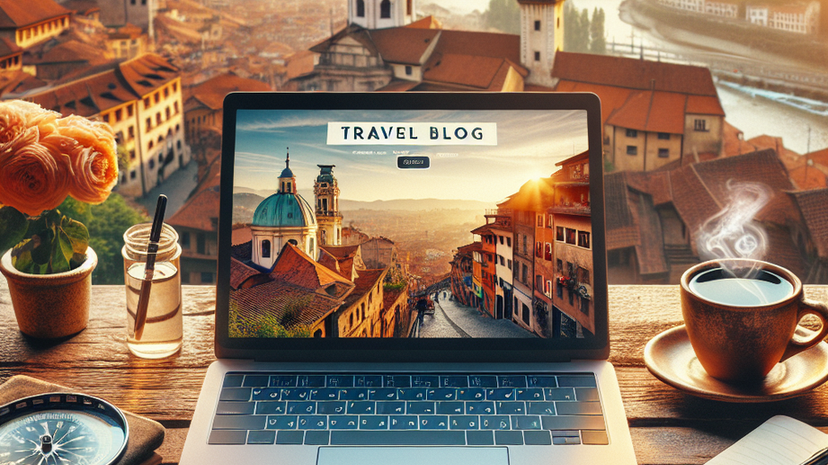In the age of widespread digital wanderlust, travel blogging has become a popular way for individuals to share their experiences, inspire others to explore the world, and provide valuable insights to a global audience. However, with the many travel blogs available, aspiring bloggers face the challenge of standing out and creating a cherished online space. The key to success lies in leveraging unique perspectives, telling stories through local experiences, and using multimedia to create a captivating travel blog that becomes a go-to source for inspiration and guidance.
A crucial part of a successful travel blog is offering unique perspectives or focusing on a specific niche. Instead of trying to cover every aspect of travel, bloggers can attract a dedicated audience by focusing on a particular area, like sustainable tourism, adventure sports, or culinary exploration. Specializing in a niche establishes credibility and allows bloggers to provide in-depth insights and recommendations that resonate with their target audience.
At the heart of any compelling travel blog is storytelling. By sharing narratives of local experiences, bloggers can transport their readers to different destinations and offer an authentic view of cultures and traditions. Sharing personal stories, anecdotes, and encounters adds depth and emotional connection to the content, making it more relatable and engaging. Each journey becomes a story waiting to be told, and by weaving these stories into their blog, travel bloggers can create an immersive experience for their readers.
To enhance the user experience, it’s important to incorporate mixed media content. Videos, podcasts, and photo essays provide a dynamic and immersive experience for readers, allowing them to visualize and connect with the destinations being portrayed. This multimedia approach enriches the blog and keeps the audience captivated, making them feel as if they are experiencing the sights, sounds, and tastes of a destination firsthand.
In the competitive world of travel blogging, adaptability and a willingness to learn are crucial. Bloggers must stay up-to-date with the latest trends and technologies. Embracing search engine optimization (SEO) and keyword strategies can improve a blog’s visibility and ranking in search engine results, ultimately driving more organic traffic to the site. By optimizing their content to reach a wider audience, travel bloggers can ensure that their blog is discoverable by those seeking travel inspiration and advice.
Engaging with the audience is another vital aspect of a successful travel blog. By encouraging audience interaction through comments, social media, and newsletters, bloggers can build a sense of community and establish a loyal following. Responding to comments, answering questions, and incorporating audience suggestions can foster a deeper connection and increase engagement. Travel bloggers should strive to create a space where readers not only feel inspired but also comfortable sharing their own experiences and seeking advice.
Adding interactive elements to the blog also enhances engagement. Incorporating maps, quizzes, and surveys not only makes the content more interactive but also encourages readers to actively participate, further immersing themselves in the blog experience. By creating opportunities for readers to contribute and engage with the content, travel bloggers can foster a sense of ownership and connection, making their blog a destination in itself.
Regularly updating and refreshing content is vital to keep a travel blog relevant and fresh. Revisiting old posts to update information and adding new insights can enhance the appeal and reach of the blog. Additionally, creating themed series or segments adds structure and depth, allowing bloggers to delve into specific topics and provide comprehensive coverage. By consistently delivering valuable and up-to-date content, travel bloggers can establish themselves as trusted sources of information in the travel community.
Redesigning the website is another strategy to consider. A visually appealing and user-friendly interface enhances the overall experience for readers, making it easier for them to navigate the blog and find the information they seek. A well-designed website also reflects the blogger’s professionalism and attention to detail, leaving a lasting impression on visitors.
Crafting a successful and captivating travel blog requires creativity and strategic planning. Having a unique angle or niche focus that sets the blog apart from others is essential. Being true to one’s voice and style helps connect with the audience on a deeper level, fostering authenticity and reliability. By using SEO and keyword strategies, incorporating multimedia, engaging with the audience, and regularly updating the blog, one can create a travel blog that becomes a go-to resource for travelers worldwide.
In conclusion, creating a captivating travel blog is more than just sharing personal experiences. By offering unique perspectives or focusing on a specific niche, leveraging storytelling through local experiences, using multimedia, and engaging with the audience, travel bloggers can create a digital space that inspires and guides readers on their journeys. With dedication, creativity, and strategic planning, a travel blog can become a cherished platform for sharing the wonders of the world. So, grab your passport, pack your bags, and embark on your journey to becoming a successful travel blogger today!











